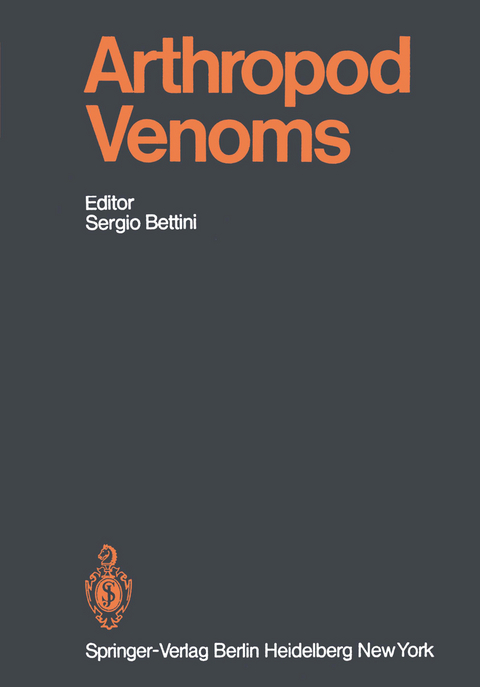
Arthropod Venoms
Springer Berlin (Verlag)
978-3-642-45503-2 (ISBN)
Arthropod venoms have received much attention and have played an important role in folklore and medicine since ancient times. Scorpion envenomation, "tarant ism," bee and wasp stings are among those subjects about which most has been speculated and written in the past. In the last 50 years or so, a great number of scientific papers have been devoted to arthropod venoms, but only a few volumes have been designed to collect this rapidly increasing material, and these are not recent. Of late, the chemistry and mode of action of several arthropod venoms have been thoroughly studied, and some of these substances will probably be used as pharmacological tools and also as therapeutic agents. The aim of the present volume is to collect in manual form new information as well as the old notions on arthropod venoms. Even though it was our intention to present a volume on arthropod venoms, and not on venomous arthropods, inevitably we were forced to include information on venom-producing organisms as well. We assumed, in fact, that those scientists for whom the present manual is primarily intended (biochemists, particularly com parative biochemists, and pharmacologists) should be familiar with the biologic elements concerning the venom-producing species; which should show them how important it is to operate in close collaboration with biologists specialized in venomous arthropod systematics and biology.
1 Introduction to Venomous Arthropod Systematics.- 2 Venoms of Crustacea and Merostomata.- 3 Defensive Secretions of Millipeds.- 4 Secretions of Centipedes.- 5 Secretions of Opilionids, Whip Scorpions and Pseudoscorpions.- 6 Review of the Spider Families, with Notes on the Lesser-Known Poisonous Forms.- 7 Venoms of Dipluridae.- 8 Venoms of Theridiidae, Genus Latrodectus.- 9 Venoms of Theridiidae, Genus Steatoda.- 10 Venoms of Ctenidae.- 11 Venoms of Scytodidae. Genus Loxosceles.- 12 The Genus Centruroides (Buthidae) and Its Venom.- 13 Venoms of Buthinae.- 14 Venoms of Tityinae.- 15 Chactoid Venoms.- 16 Tick Paralysis.- 17 Toxins of Blattaria.- 18 Venoms of Rhyncota (Hemiptera).- 19 Venoms of Coleoptera.- 20 Venoms of Lepidoptera.- 21 Venoms of Apidae.- 22 Venoms of Sphecidae, Pompilidae, Mutillidae, and Bethylidae.- 23 Venoms of Vespidae.- 24 Venoms of Braconidae.- 25 Venoms and Venom Apparatuses of the Formicidae: Myrmeciinae, Ponerinae, Dorylinae, Pseudomyrmecinae, Myrmicinae and Formicinae.- 26 Venom and Venom Apparatuses of the Formicidae: Dolichoderinae and Aneuretinae.- Author Index.
| Erscheint lt. Verlag | 23.3.2012 |
|---|---|
| Reihe/Serie | Handbook of Experimental Pharmacology |
| Zusatzinfo | XXXIII, 977 p. |
| Verlagsort | Berlin |
| Sprache | englisch |
| Maße | 170 x 244 mm |
| Gewicht | 1711 g |
| Themenwelt | Medizin / Pharmazie ► Allgemeines / Lexika |
| Medizin / Pharmazie ► Pharmazie ► PTA / PKA | |
| Schlagworte | Biology • Chemistry • Gift • Gliederfüsser • Medicine • Poison • Research • Toxicology • Toxikologie • Veterinärtoxikologie |
| ISBN-10 | 3-642-45503-4 / 3642455034 |
| ISBN-13 | 978-3-642-45503-2 / 9783642455032 |
| Zustand | Neuware |
| Haben Sie eine Frage zum Produkt? |
aus dem Bereich


